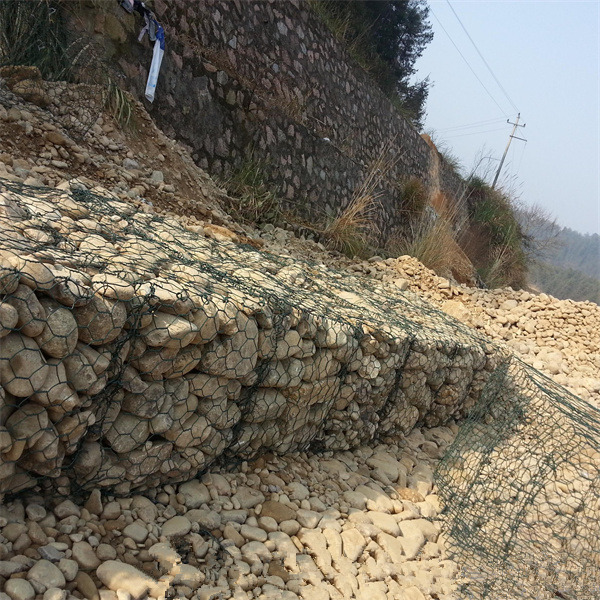Dhj . 05, 2024 08:00 Back to list
Specifications for Factory-Made Gabion Retaining Walls for Enhanced Structural Support
Gabion Retaining Wall Specifications An In-Depth Overview
Gabion retaining walls have gained immense popularity in both commercial and residential landscaping due to their durability, eco-friendliness, and versatility. They are particularly effective in controlling erosion, managing slope stability, and enhancing aesthetic appeal. This article aims to provide a comprehensive overview of gabion retaining wall specifications, focusing on factory standards and recommendations that guide their manufacture and installation.
Definition and Purpose of Gabion Walls
Gabion walls are structures made of wire mesh cages filled with stones, rocks, or other materials. The term gabion is derived from the Italian word gabbione, which means big cage. These walls serve multiple purposes, chiefly erosion control, soil stabilization, and landscape enhancement. Their porous structure allows water to flow through, reducing hydrostatic pressure buildup behind the wall and minimizing the risk of structural failure.
General Specifications
1. Material Selection The wire mesh used in gabion walls is typically made of galvanized steel or PVC-coated wire for enhanced corrosion resistance and durability. The gauge of the wire should be robust enough to withstand natural weather elements, generally ranging from 2.0 mm to 4.0 mm in diameter. The mesh opening size can vary, but common sizes range from 50 mm x 50 mm to 150 mm x 150 mm.
2. Fill Material The choice of fill material significantly affects the wall’s integrity and appearance. Commonly used materials include natural stone, recycled concrete, and brick. The fill should be angular rather than rounded to ensure that it interlocks and provides stability. The minimum stone size usually recommended is 100 mm in diameter, though this may vary based on the wall height and design.
3. Dimensions Gabion baskets typically come in various standard dimensions, with common sizes being 1m x 1m x 1m or 0.5m x 1m x 1m. The height and length of the retaining wall can be adjusted based on specific project requirements. Keep in mind that walls exceeding 1 meter in height may require additional engineering considerations, such as tiering or drainage features, to ensure stability.
gabion retaining wall specifications factory

4. Installation Guidelines Proper installation is crucial for the effectiveness of gabion walls. The base should be well-graded and compacted to prevent settlement. A drainage system should be integrated behind the wall to avoid water accumulation that could lead to wall failure. The gabion units must be connected using spiral wires or lacing wire at the edges to maintain structural integrity.
Structural Considerations
1. Retaining Wall Height While gabion walls can be built to varying heights, it is crucial to comply with local regulations and engineering guidelines. Freestanding or gravity-type gabion walls are typically recommended for heights up to 3 meters. If the wall is over 3 meters, it may require reinforcement and a more complex design.
2. Geo-textile Fabric Installing geo-textile fabric behind the wall can minimize soil erosion and create a natural drainage path. It acts as a barrier to soil and prevents smaller particles from clogging the drainage gaps within the gabions.
3. Load Considerations The design should account for lateral earth pressure, surcharge loads, and other dynamic loads. Retaining walls should be engineered to withstand not only the weight of the fill material but also any additional stresses from vehicles, structures, or natural forces.
Final Thoughts
Gabion retaining walls are an innovative solution for various landscaping and civil engineering challenges. Their adaptability to different environments makes them a popular choice for homeowners, contractors, and municipalities alike. Adhering to manufacturer specifications and local regulations is crucial in ensuring longevity and performance.
The growing interest in sustainable building practices further enhances the appeal of gabion walls, as they often incorporate locally sourced materials and support natural drainage. Investing in quality materials and professional installation will result in a reliable and aesthetically pleasing retaining wall that stands the test of time. Whether used for functional purposes or beautification, gabion retaining walls exemplify a harmonious blend of nature, engineering, and design.
-
Wire Mesh Thickness Impact on Gabion Wall Load Bearing
NewsAug.12,2025
-
Ultimate Guide to Hexagonal Gabion Box
NewsAug.12,2025
-
Types of Rocks for Gabion Baskets Durability and Aesthetics
NewsAug.12,2025
-
Standard Gabion Box Sizes and Their Industrial Applications
NewsAug.12,2025
-
Easy Guide to Building Garden Gabion Cages at Home
NewsAug.12,2025
-
Drainage Solutions for Gabion Mesh Structures
NewsAug.12,2025
-
Visualizing Gabion 3D Integration in Urban Landscapes with Rendering
NewsJul.23,2025






